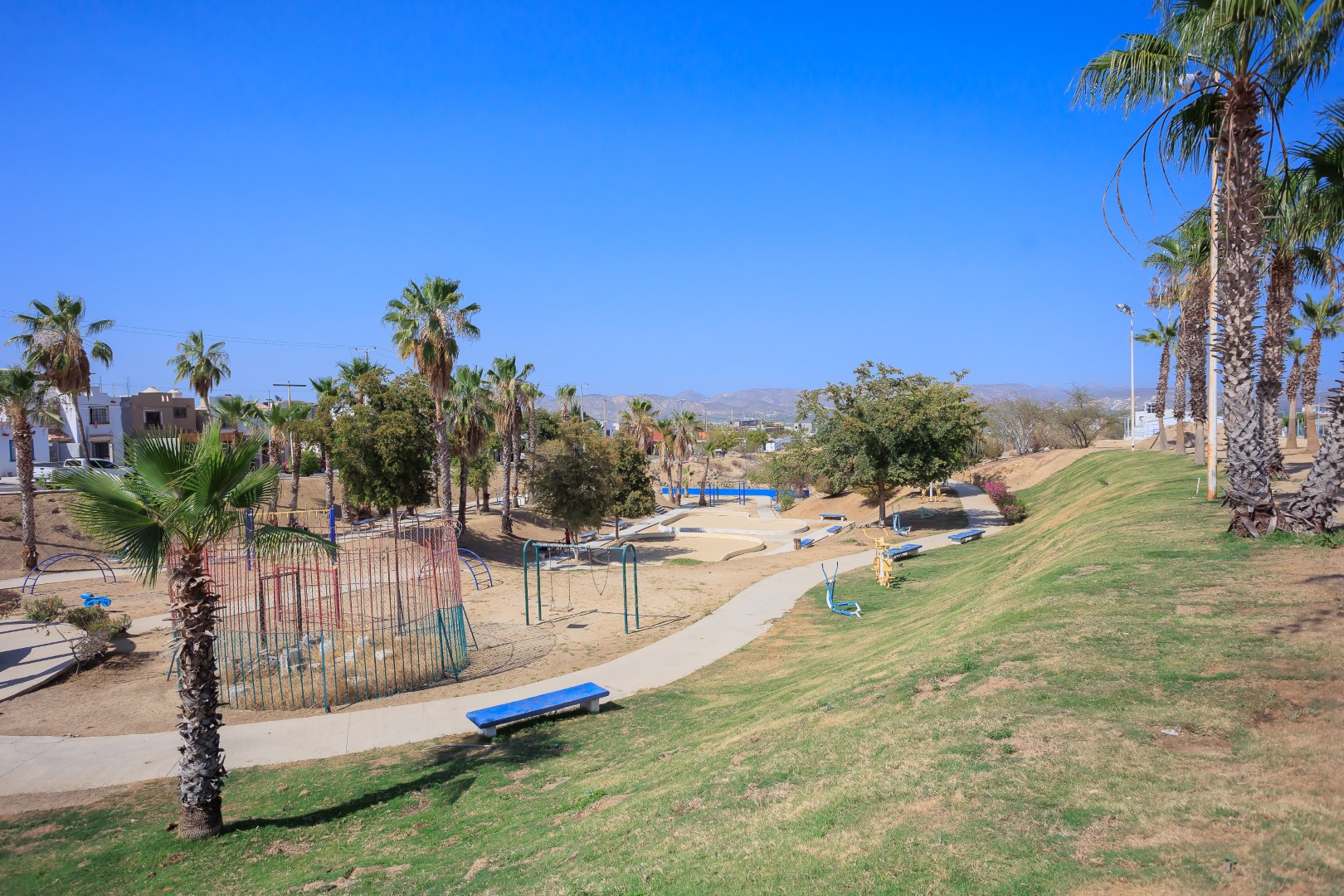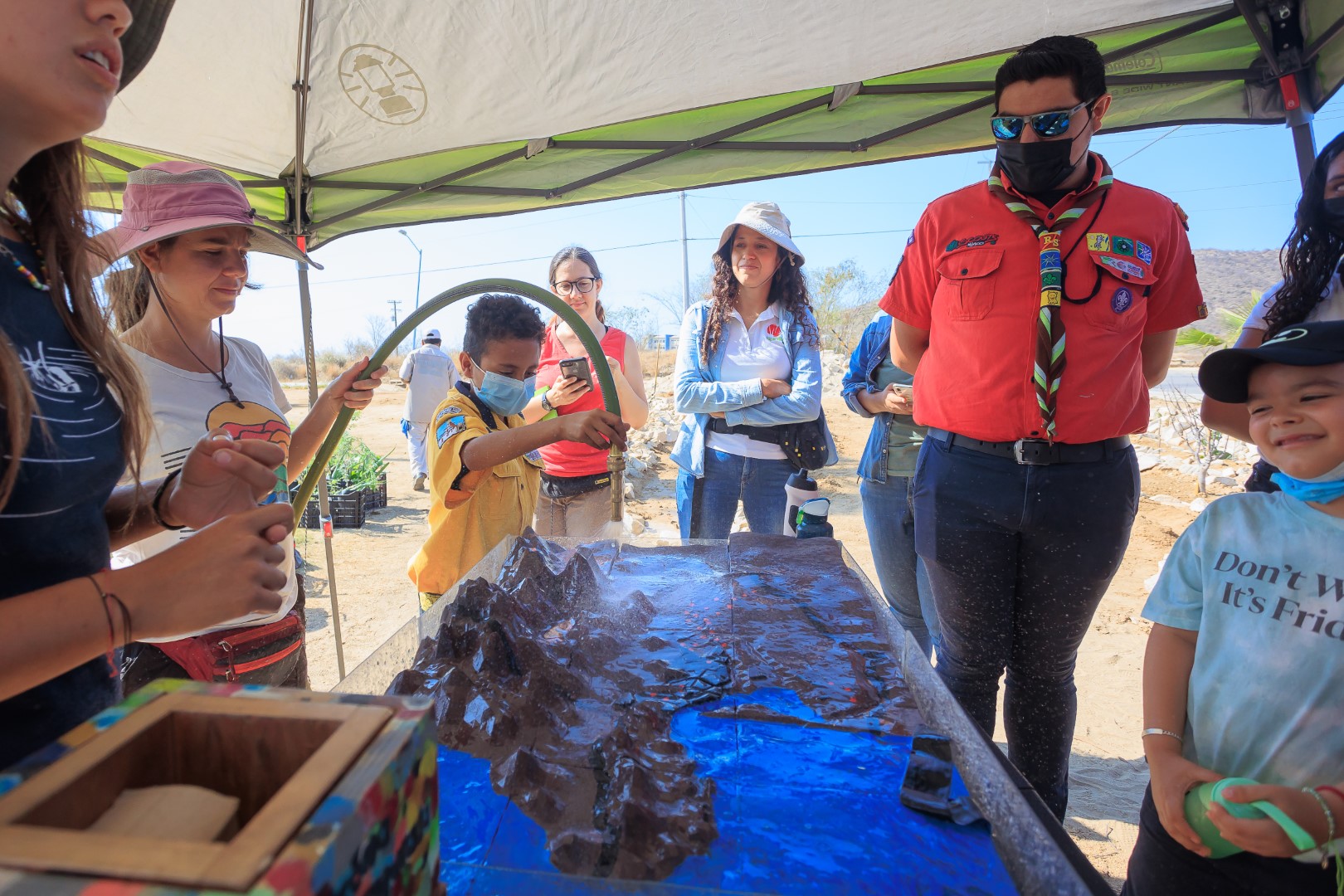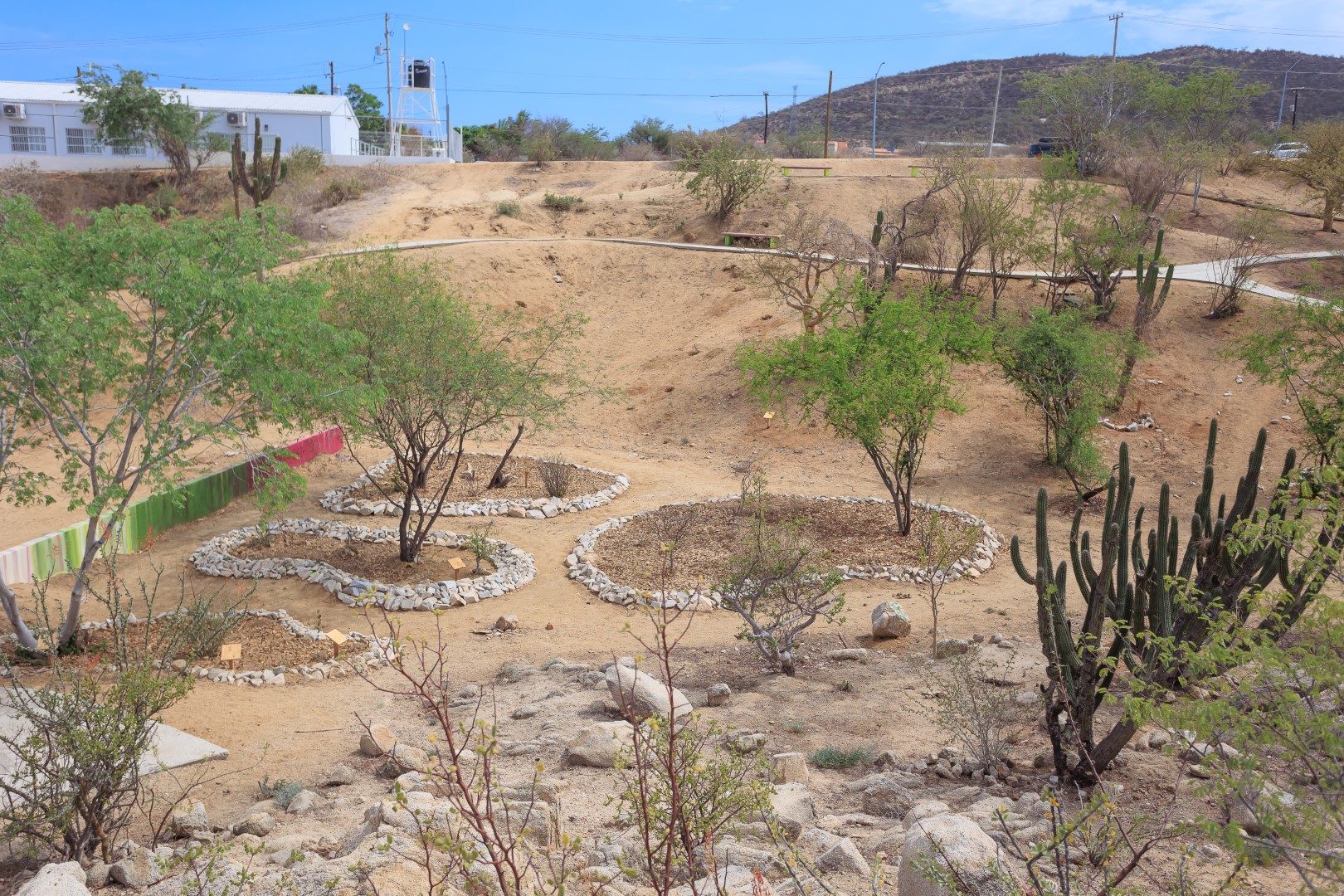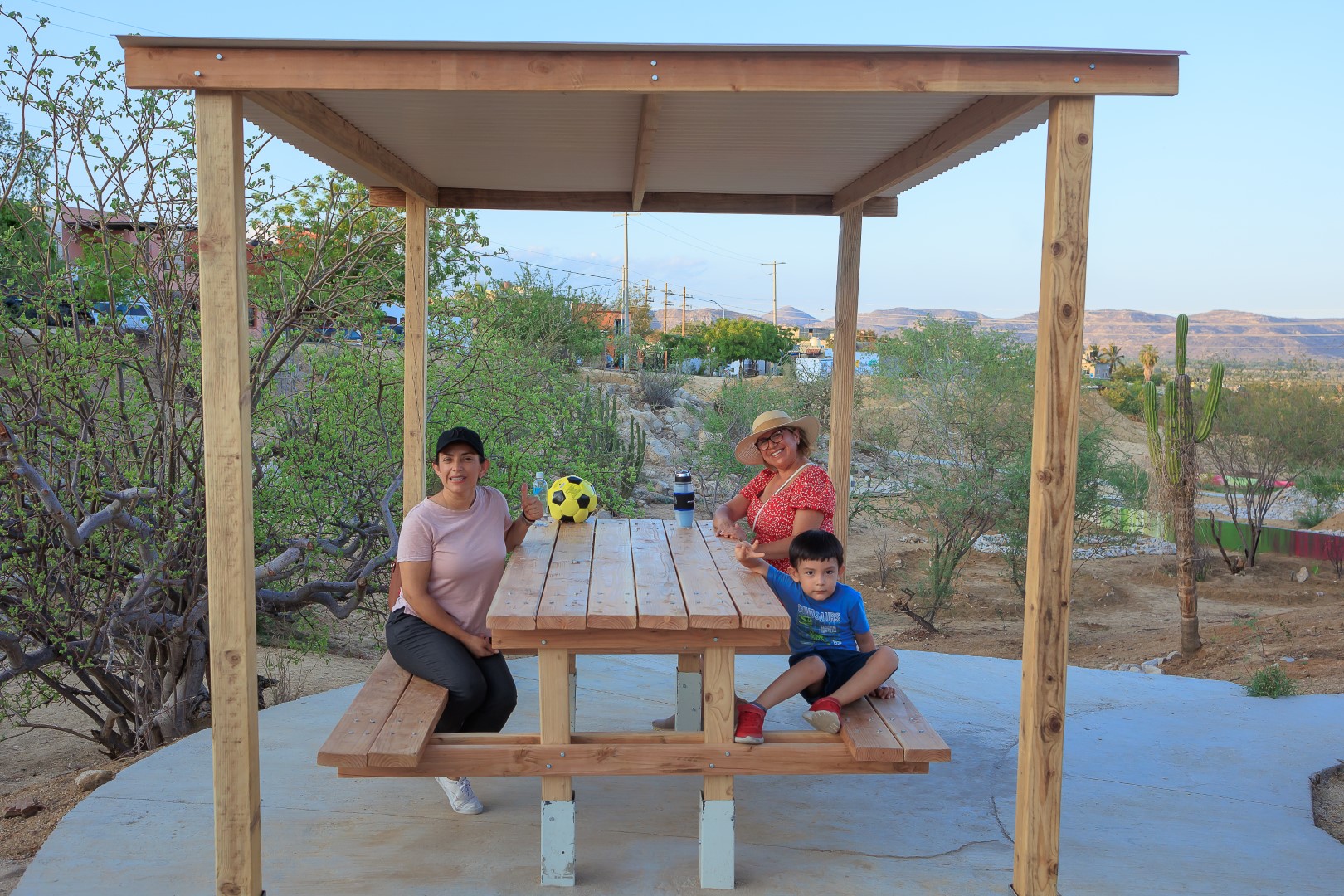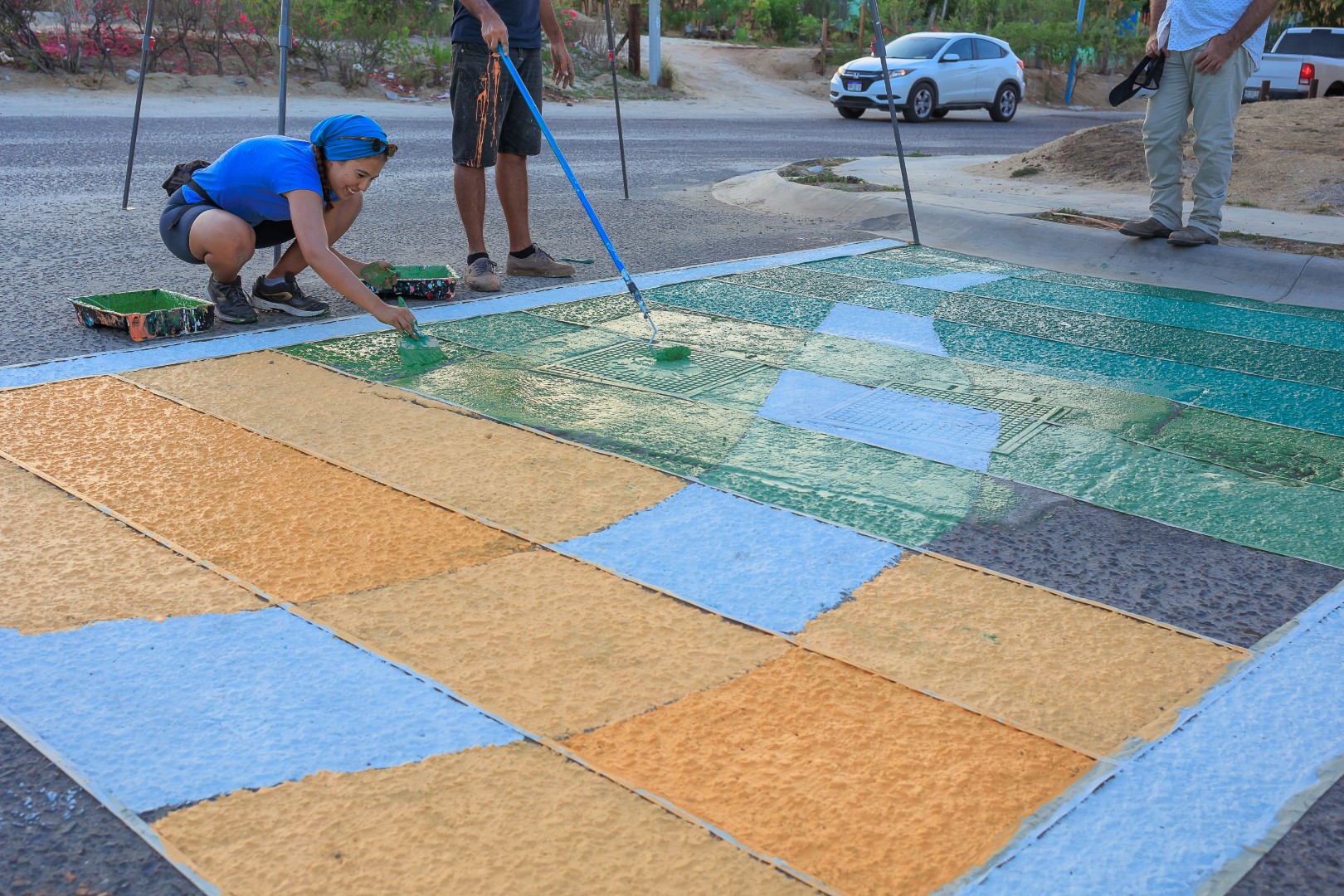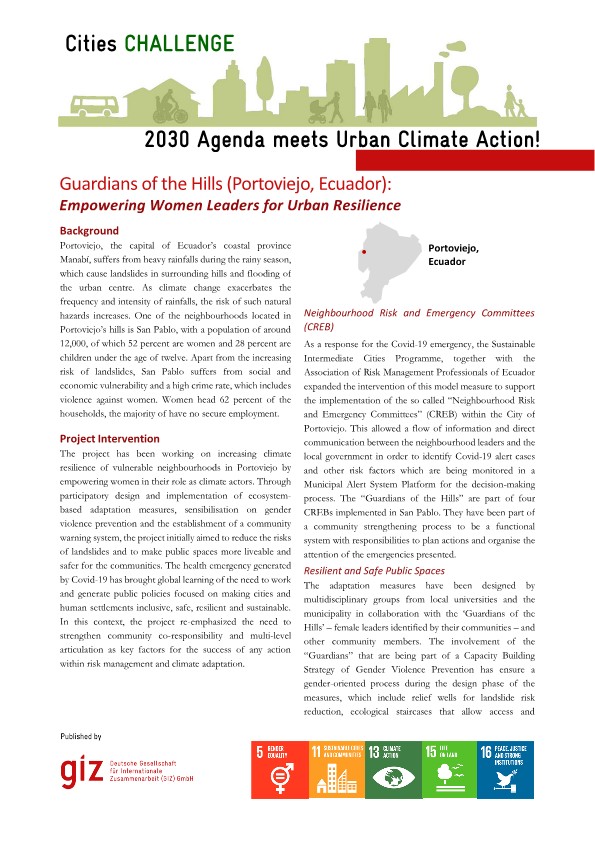Mexico
Creating an urban oasis
The transformation of Parque Hundido Pedro Sanchez
SanJose del Cabo, Los Cabos, Mexico
The Urban Living Lab in Mexico is part of to the CitiesCHALLENGE 2.0 (2021-2023). It developed and rehabilitated a multifunctional, safe, and inclusive public green space within ‘Parque Hundido Pedro Sanchez’ in the coastal city of Los Cabos. The main objective: to improve the resilience of the neighborhood and to enhance the citizen’s quality of life. To achieve this, the ULL brings together the municipality, the local community and allied organisations for a co-creation process with a special focus on gender and climate.
The newly-constructed green infrastructure promotes biodiversity and addresses the water and climate issues in the area by providing watersheds, soakaways, infiltration, runoff areas and native vegetation. Furthermore, the residents – especially the youth, women and girls – can use the public space for tactical urbanism and as a meeting point to foster exchange, as well as educational, cultural and sports activities.
Learn more about the Urban Living Lab ‘Our Resilient Neighbourhood’ in San José del Cabo, Los Cabos, Mexico.
- WHO
Urban Planning Institute of Los Cabos (IMPLAN Los Cabos), Municipality Los Cabos, Urbanería Niparajá EPI Mexico Philantropiece ASA
- WHAT
Our resilient neighbourhood: A local park was rehabilitated in a participatory process with local residents, the municipality and organizations of civil society. The initiative focussed on green infrastructure, urban art, carpentry, capacity building and environmental education.
- WHEN
October 2021 – April 2023
- WHY
The initiative aimed at creating a model of an inclusive public space that is adjusted to local conditions and contributes to the adaptation to climate change, the conservation of native biodiversity, while offering a save and multifunctional space to the local community.
- GERMAN DEVELOPMENT & COOPERATION PARTNERS
Protecting coastal urban regions (BIOCITIS) Sector Programme Cities (GIZ), Cities Alliance, UN-Habitat, Wuppertal Institute
- BUDGET
100 000 € | 30 000 € Co-funding Biocitis
Beatriz González
Resident of San Jose del Cabo, Mexico, volunteered in the transformation of Hundido Park
“I come to this park very often and that’s why I want to make sure it looks beautiful and pleasant.”
One female leader and matron of the parish stands out: Zoila Moro inspires her neighbours with her enthusiasm and her commitment to take ownership of public spaces, which she wants to make friendlier and safer. Zoila feels a strong sense of belonging to San Pablo and speaks of her neighbours as her ‘great neighbourhood family’.
They take part out of conviction
Alejandro Silva comes from the state of Michoacán and is still new to San Jose del Cabo. He became aware of the Urban Living Lab when he observed a workshop with school children on the park terrain: “When I was doing my work in the city centre and had to walk through this area, I noticed some children with picks and shovels there. I asked them what they were doing and why they were doing it. They explained to me the background of the project and I didn’t hesitate to offer my hands to contribute to it.”
Beatriz González lives about six blocks away from the park and has known it for a long time: “I come to this park very often and that’s why I want to make sure it looks beautiful and pleasant”, she reports. “I’m interested in my community, in nature and in a dignified environment. I also recently watched a very cool documentary that was about land regeneration. After that, I got even more interested in the topic.”
Giovanni Labastida, another young resident, was particularly motivated to take part because of the poor condition of the park: “I think it is important and necessary work. Especially because this park was very abandoned, so I’m helping here.”
Meaningful work for the “Urbanería”
During the corona pandemic, the park was barely visited and maintained. The three residents, together with other volunteers, built six water retention basins in the park to catch some of the rainwater so that it can seep away more slowly. This was done, for example, by creating trenches in the ground as well as stones to prevent erosion.
“We are helping to conserve water and other natural resources that are very valuable in this part of Mexico, especially because it is an arid region. We use the water resources and improve the space in general, also through reforestation with native flora”, Giovanni Labastida learned in the Urban Living Lab workshop.
The volunteers, together with the local management team from GIZ Mexico, also planted 228 trees in the park which require little water and care and are well suited to this region. Beatriz González: “We label those trees. Many people who live here and are supposed to know the area don’t know what kind of vegetation or which plants are common for our region. We also want visitors or new residents to learn a little about our flora.”
The community of volunteers is called “Urbanería”. Originally, only 20 volunteers were supposed to take part, but in the end there were as many as 189 people. Many of them want to continue taking care of the park even after the Urban Living Lab ends. Hundido Park has once again become a liveable meeting place in the neighbourhood. This is felt by everyone who got involved here.
A new community spirit has emerged
Alejandro Silva sums up the volunteers’ mentality this way: “They like nature, they like things to be alive, to vibrate nicely. And they are all a super sweet team, they work hand in hand and everyone has different skills. All this diversity has led us to a very beautiful common goal.”
Beatriz González has also met many like-minded people: “We don’t really do that in our daily lives. I mean, we don’t even know our neighbour next door. But I’ve met people here who think the same way I do, who are interested in this kind of project and in improving their community, like I am, and that’s great.”
Giovanni Labastida can confirm this: “Participating here also means getting closer to each other, getting to know each other, working and collaborating as a community.”
The teambuilding succeeded particularly within the workshops in which the three of them took part and that were guided by dedicated professionals. “It was really great to work with them and we are also very grateful that they chose this place and our community for it”, Beatriz González sums up.
The knowledge is spread further
Giovanni Labastida is sure that their learnings during the volunteer work in Hundido Park can be replicated by other people everywhere: “If the conditions in your house allow it, you can of course apply such measures in any space, especially if you have an abandoned or dry property. You can start with this kind of project, collecting water for your family business or for the trees you want to plant.” Alejandro Silva believes that if the Urban Living Lab approach spreads widely, it will not only help people, but nature as a whole: “We ourselves are part of this nature. If we forget about it and watch it die, we will die with it.”
Resource Hub
Factsheet Mexico
Download the CitiesCHALLENGE Factsheet from our Resource Hub!



